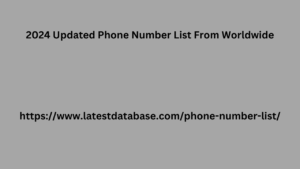Understanding Email Address Normalization
Email address normalization is the process of standardizing email addresses into a consistent format.
2. Why is Email Address Normalization Important?
1. Improved Deliverability:
- Reduced bounce rates: When email addresses are normalized, the likelihood of delivery failures due to incorrect formatting is significantly reduced.
- Enhanced email reputation: Consistent email delivery helps maintain a positive sender reputation, which can improve overall deliverability.
2. Data Quality and Accuracy:
- Data integrity: Normalization ensures that email data is accurate and consistent, preventing errors in data analysis and reporting.
- Enhanced user experience: Users benefit from a smoother email experience when their addresses are processed correctly.
3. Security and Compliance:
- Reduced fraud: Normalization can help prevent email address spoofing and other fraudulent activities.
- Compliance with regulations: Many data privacy regulations require accurate and standardized email data.
3. Key Components of Email Address Normalization
1. Parsing and Validation:
- Parsing: The process of breaking down an email address into its constituent parts (local part and domain part).
- Validation: Checking if the parsed components adhere to the RFC 5322 email address syntax.
2. Case Folding:
- Converting to lowercase: Converting 2024 Updated Phone Number List From Worldwide all characters in the local part and domain part to lowercase. This ensures consistency and prevents delivery issues due to case variations.
3. Internationalization:
- IDN conversion: Converting Internationalized Special Material Domain Names (IDNs) to their Punycode equivalent. This allows non-ASCII characters to be represented in email addresses.
4. Domain Name Verification:
- MX record lookup: Checking if the domain part of the email address has valid Mail Exchanger (MX) records. This ensures that the email can be delivered to the correct server.
5. Duplicate Removal:
- Identifying duplicates: Identifying and removing duplicate email addresses from a dataset. This helps prevent redundant data and improves data quality.
6. Data Enrichment:
- Adding additional information: Optionally, enriching email addresses with additional data, such as the recipient’s name, company, or location. This can be useful for targeted marketing or personalization.
4. Challenges and Best Practices
1. Handling Variations and Inconsistencies:
- Data cleaning: Implement robust data cleaning techniques to address inconsistencies and errors.
2. Addressing Privacy Concerns:
- Data protection: Ensure that email address normalization processes comply with relevant data privacy regulations.
3. Choosing the Right Tools and Libraries:
- Evaluation: Evaluate different tools and libraries based on features, performance, and ease of use.
- Open-source options: Consider using open-source libraries like
email_validatorin Python orvalidatorin JavaScript for flexibility and cost-effectiveness.
4. Continuous Improvement:
- Monitoring and testing: Regularly monitor the effectiveness of your normalization processes and conduct testing to identify and address issues.
- Staying updated: Keep up with changes in email standards and best practices to ensure the accuracy and reliability of your normalization methods.
5. Real-World Use Cases
1. Email Marketing:
- Targeted campaigns: Normalization helps deliver email campaigns to the correct recipients, improving engagement and ROI.
- Data segmentation: Accurate email data enables effective segmentation and personalization of marketing campaigns.
2. Customer Relationship Management (CRM):
- Data consolidation: Normalization ensures that customer data is consistent across different systems, improving data quality and analysis.
- Improved customer interactions: Accurate email addresses facilitate better communication and personalized customer experiences.

